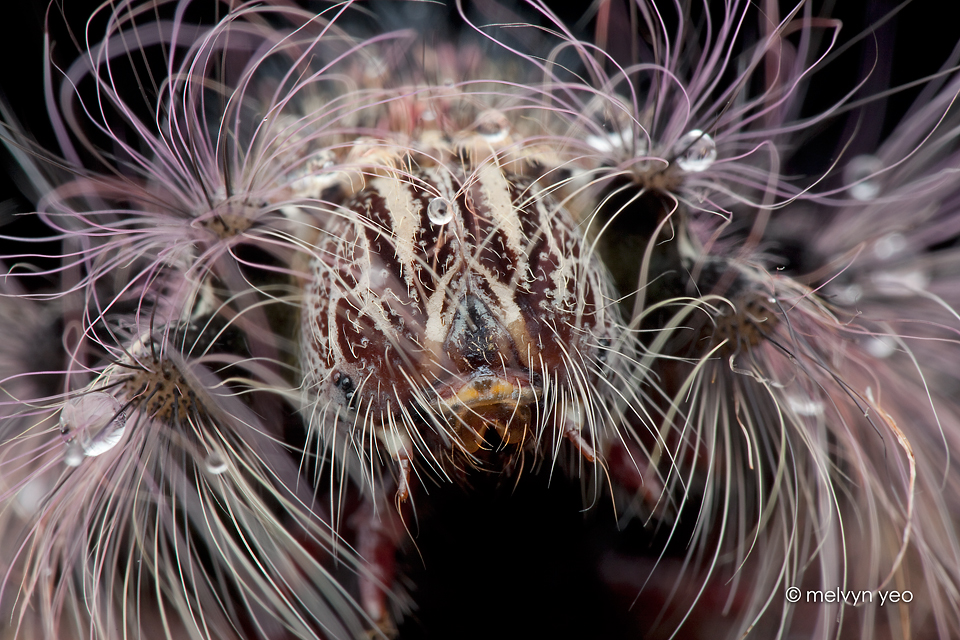ShopDreamUp AI ArtDreamUp
Deviation Actions

Wallpapers
If you love wallpapers in different styles, you are in the right place. We offer wallpapers that you have never seen anywhere before, (mostly for phones). Support my work by contributing to my tip jar. Help me stay motivated to publish more artwork so you can access exclusive artwork! Thank you.
$5/month
Suggested Deviants
Suggested Collections
You Might Like…
Description
Quote [link]
Many animals feed on caterpillars as they are rich in protein. As a result caterpillars have evolved various means of defense. The appearance of a caterpillar can often repel a predator: its markings and certain body parts can make it seem poisonous, or bigger in size and thus threatening, or non-edible. Some types of caterpillars are indeed poisonous.
Caterpillars have evolved defenses against physical conditions such as cold, hot or dry environmental conditions. Some Arctic species like Gynaephora groenlandica have special basking and aggregation behaviours[3] apart from physiological adaptations to remain in a dormant state.
Many caterpillars are cryptically colored and resemble the plants on which they feed. They may even have parts that mimic plant parts such as thorns. Their size varies from as little as 1 mm to about 75 millimetres (3.0 in). Some look like objects in the environment such as bird droppings. Many feed enclosed inside silk galleries, rolled leaves or by mining between the leaf surfaces. Caterpillars of Nemoria arizonaria that grow in spring feed on oak catkins and appear green. The summer brood appear like oak twigs. The differential development is linked to the tannin content in the diet.
More aggressive self-defense measures are taken by some caterpillars. These measures include having spiny bristles or long fine hair-like setae with detachable tips that will irritate by lodging in the skin or mucous membranes.[2] However some birds (such as cuckoos) will swallow even the hairiest of caterpillars. The most aggressive caterpillar defenses are bristles associated with venom glands. These bristles are called urticating hairs. A venom which is among the most potent defensive chemicals in any animal is produced by the South American silk moth genus Lonomia. Its venom is an anticoagulant powerful enough to cause a human to hemorrhage to death (See Lonomiasis).[6] This chemical is being investigated for potential medical applications. Most urticating hairs range in effect from mild irritation to dermatitis.
Many animals feed on caterpillars as they are rich in protein. As a result caterpillars have evolved various means of defense. The appearance of a caterpillar can often repel a predator: its markings and certain body parts can make it seem poisonous, or bigger in size and thus threatening, or non-edible. Some types of caterpillars are indeed poisonous.
Caterpillars have evolved defenses against physical conditions such as cold, hot or dry environmental conditions. Some Arctic species like Gynaephora groenlandica have special basking and aggregation behaviours[3] apart from physiological adaptations to remain in a dormant state.
Many caterpillars are cryptically colored and resemble the plants on which they feed. They may even have parts that mimic plant parts such as thorns. Their size varies from as little as 1 mm to about 75 millimetres (3.0 in). Some look like objects in the environment such as bird droppings. Many feed enclosed inside silk galleries, rolled leaves or by mining between the leaf surfaces. Caterpillars of Nemoria arizonaria that grow in spring feed on oak catkins and appear green. The summer brood appear like oak twigs. The differential development is linked to the tannin content in the diet.
More aggressive self-defense measures are taken by some caterpillars. These measures include having spiny bristles or long fine hair-like setae with detachable tips that will irritate by lodging in the skin or mucous membranes.[2] However some birds (such as cuckoos) will swallow even the hairiest of caterpillars. The most aggressive caterpillar defenses are bristles associated with venom glands. These bristles are called urticating hairs. A venom which is among the most potent defensive chemicals in any animal is produced by the South American silk moth genus Lonomia. Its venom is an anticoagulant powerful enough to cause a human to hemorrhage to death (See Lonomiasis).[6] This chemical is being investigated for potential medical applications. Most urticating hairs range in effect from mild irritation to dermatitis.
Image size
960x640px 559.57 KB
© 2013 - 2024 melvynyeo
Comments6
Join the community to add your comment. Already a deviant? Log In
You, my friend, are simply amazing.






























